Garlic mustard is nutritious and invasive. This herbaceous plant (Alliaria Petiolata) is in the Brassicaceae family, formerly know as Cruciferae. This is the group that includes cabbage, kale and broccoli. So you know it’s nutritious!
The latin name Alliaria refers to the Allium family of onions and garlic, even though that’s not botanically correct. The list of other names for Garlic mustard is a testament to how well used this potherb has been over the centuries. Jack by the Hedge, Sauce Alone, Garlic Root, Poor Man’s Mustard, Garlic Wort and Hedge Garlic are just a few of its names.
This post contains affiliate links from which I can earn a commision, at no cost to you. Visit my full disclosure page here.
Garlic mustard is native to most of Euroupe and western Asia and even grows in the Himalayas.
Description
The biennial plant grows first as a rosette with leaf stems coming up from a center spot at the ground. At this stage, leaves are more kidney shaped with scallopped edges.
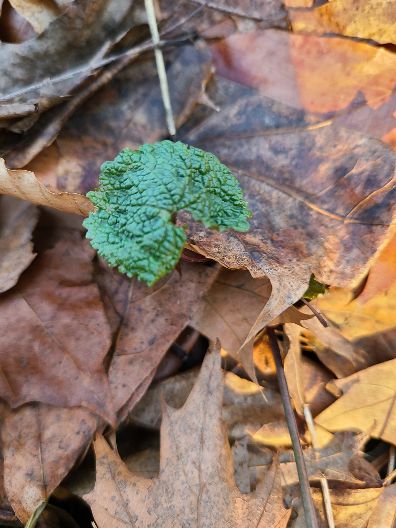
Garlic Mustard leaf in January 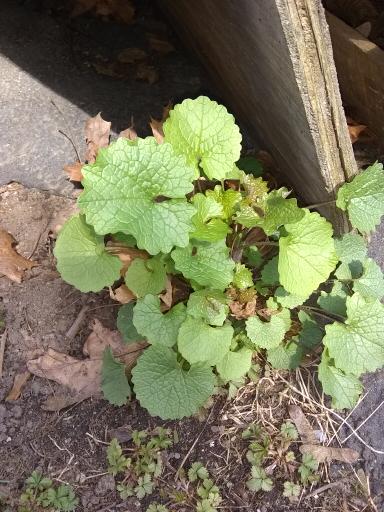
Young, first year garlic mustard rosette 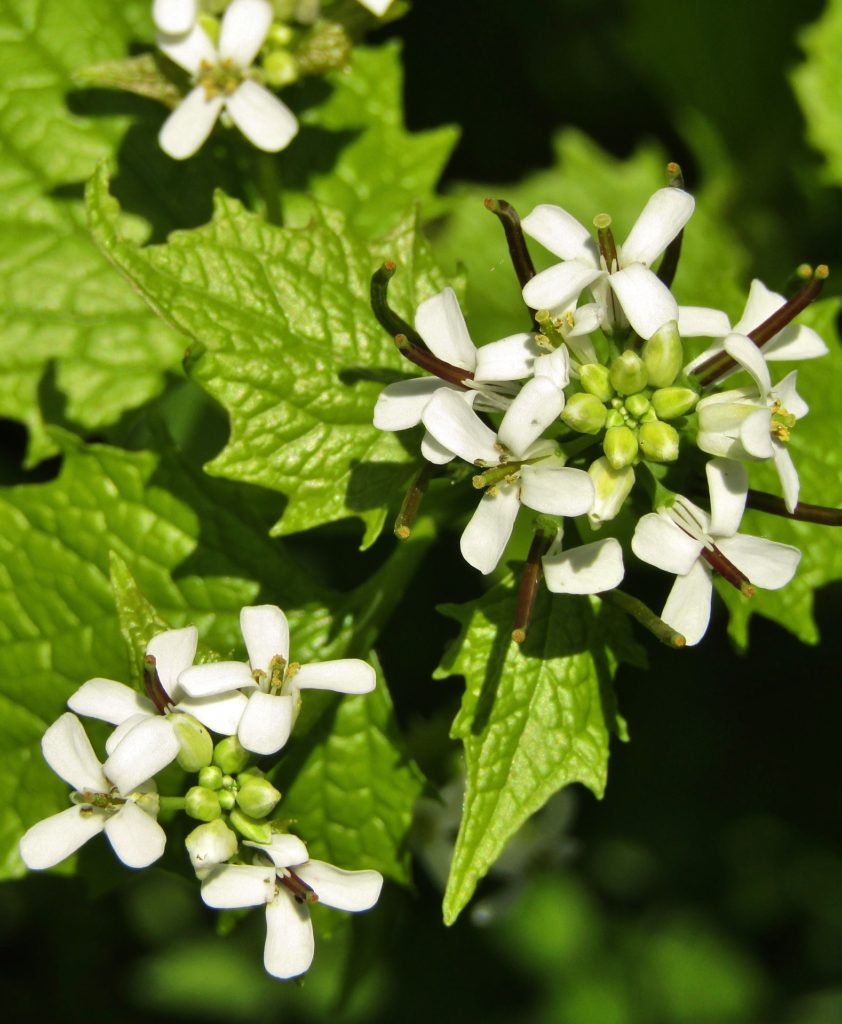
Garlic Mustard Flowers Image by Schwester M. Jutta Mit der Spende unterstütze from Pixabay
In their second year, the plant sends up a stem and leaves become more triangular with toothed edges, especially near the top of the stem, as seen in the picture above right. Garlic mustard can grow 3 to 4 feet high in its second year when it will produce seed pods.
This is my third post about invasive plant species. Read about Japanese Knotweed and English Ivy!
Small, white flowers grow in clusters. They have four petals arranged in a cross pattern, with 6 stamen – 4 tall and 2 short. Each flower will produce seed pods. Each pod has numerous seeds that can stay viable for more than 5 years. Garlic mustard’s tap root has an “S” curve just below the root crown.

Invasive
Invasive plant species can cause severe problems in our ecosystems by crowding out native species. Garlic mustard was brought over from Europe in the 19th century for its food and medicinal benefits. This biennial plant produces huge quantities of seed and can take over vast areas of forest understory and edges. Seeds are spread by people, large animals, flowing water and wind.
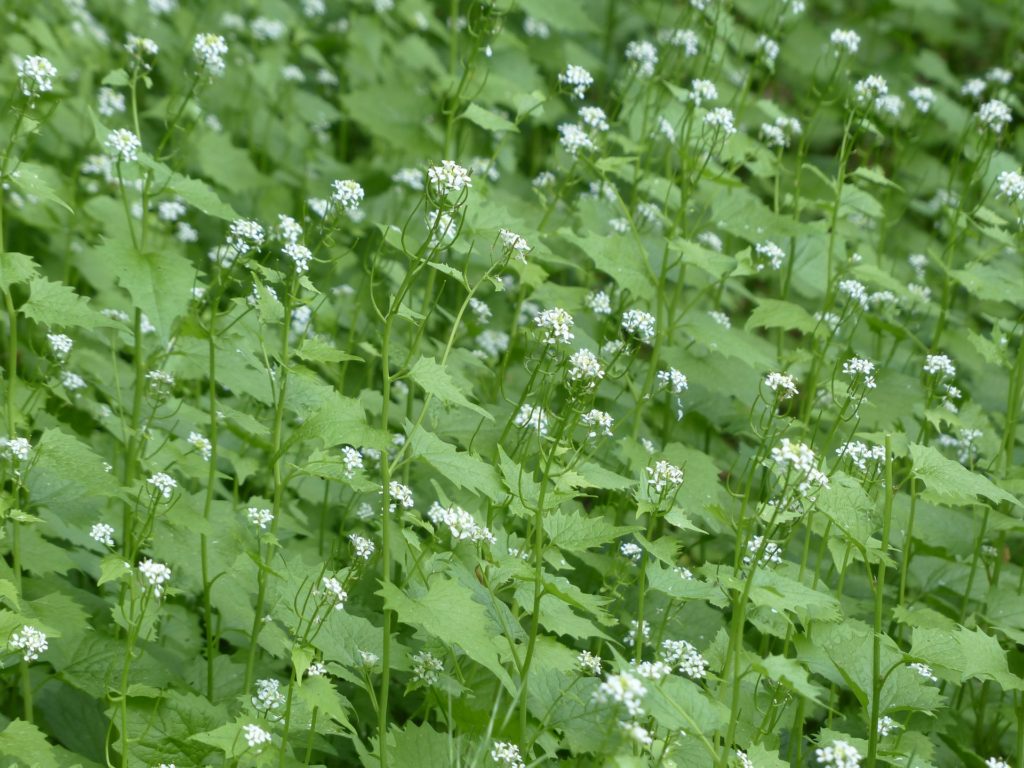
I see garlic mustard along shady road sides, fence or hedgerows and in the woods, especially along the edges. It’s found in urban areas, swamps and embankments throughout the northeastern and midwestern U.S. and into Canada.

Controlling Garlic Mustard
Many websites will list toxic chemicals that can be used to control garlic mustard. I encourage you not to use herbicides of any kind. Keeping garlic mustard under control can be as simple as pulling it out by the root. If seed pods have formed, you’ll need to bag the plants and dispose of them. The seeds of plants that have been pulled, but left on the ground, can continue to mature and become viable! If the plant is flowering, seed pods are already forming and should also be bagged and disposed.
For more on gardening, chickens, DIY projects, being frugal and living sustainably, please subscribe to my weekly email newsletter!
For large infestations, you can contact a professional to burn it out.

Whatever method you use, you will need to repeat it for at least three years. Seeds can last up to 5 years and they are almost certainly already in the soil.
A wonderful way to get rid of garlic mustard is to eat it! You can pull the entire plant and take all the parts you want. Or you could take some of the leaves and allow the plant to continue growing. Just be sure to pull it before it goes to seed!
You didn’t have to plant it or go buy it! What could be better than tasty, nutrient-dense, free food?

Nutrition
Mustard greens are known for their nutrition and that applies to garlic mustard too. This plant packs a nutritious punch with Vitamin C, beta-carotene, fiber, minerals and Omega 3 fatty acids.
You may read that garlic mustard contains cyanide. You’d need to eat large quantities over long periods for it to be a problem. It has no more than spinach or almonds which are considered safe for daily use. However, if you have a sensitivity to tapioca, don’t eat garlic mustard.

Foraging
Leaves and flowers can be harvested at any time, but are best before the second year plant develops seeds. Tap roots should be harvested in spring or fall, not while the flowers are in bloom. You can also harvest the seed pods, but please don’t allow the plants to go to seed if you can avoid it.

If you’re new to foraging, be sure to check multiple sources to be absolutely sure you are identifying the plant correctly. There aren’t many look-alike plants you might mistake for garlic mustard, and none of them have the distinctive oniony-garlic aroma of the crushed leaves of garlic mustard.
When you bring the leaves inside, soak them in cool water then rinse thoroughly.
Two of my favorite resources for plant identification appear below.
Peterson Field Guide to Edible Wild Plants and Peterson Field Guide to Medicinal Plants and Herbs of Eastern and Central North America
I found two beautiful reference books I hope to get soon: Forage, Harvest, Feast: A Wild Inspired Cuisine and Beyond The War on Invasive Species: A Permaculture Approach to Ecosystem Restoration.
Serving Suggestions
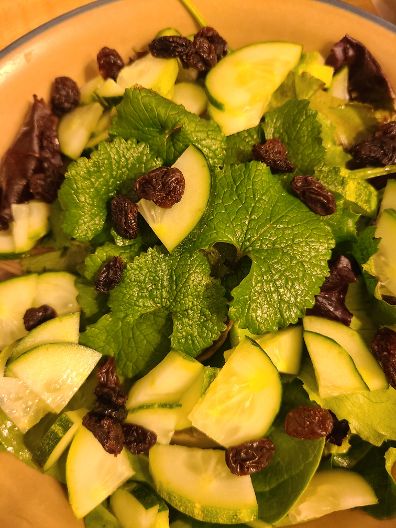
The leaves, flowers and stems of garlic mustard can be used raw or cooked in many different dishes. They’ll impart a peppery bite similar to garlic or mustard.
- Salads
- Juice
- Pesto (Find my Infinite Possibilities of Pesto Formula here to use with any greens!)
- Soups and stews
- Savory breads and rolls
- Eggs
- Sautee or steam greens as you would spinach
- Add to pasta, rice or other cooked dishes
Roots have a flavor much like horseradish. Seeds can be ground to make homemade mustard. I plan to try both in the fall.
Until I read up on garlic mustard from several different sources, I was just using the leaves of garlic mustard in salads. And I really enjoy the garlicky, mustard bite it adds. Since researching my article, I can’t wait to try garlic mustard in many other ways. I’ll share updates when I do!
What do you think about foraging? Have you ever tried it? I’d love to hear about your experiences in the comments!




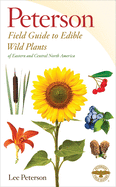
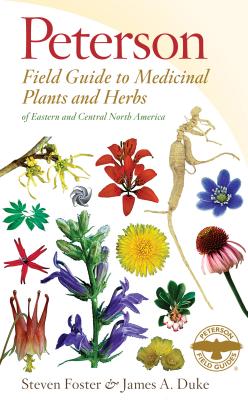
Pingback: Stop the Invasion: Japanese Knotweed! | My Frugal Nature
Pingback: English Ivy, A Pretty Pest | My Frugal Nature